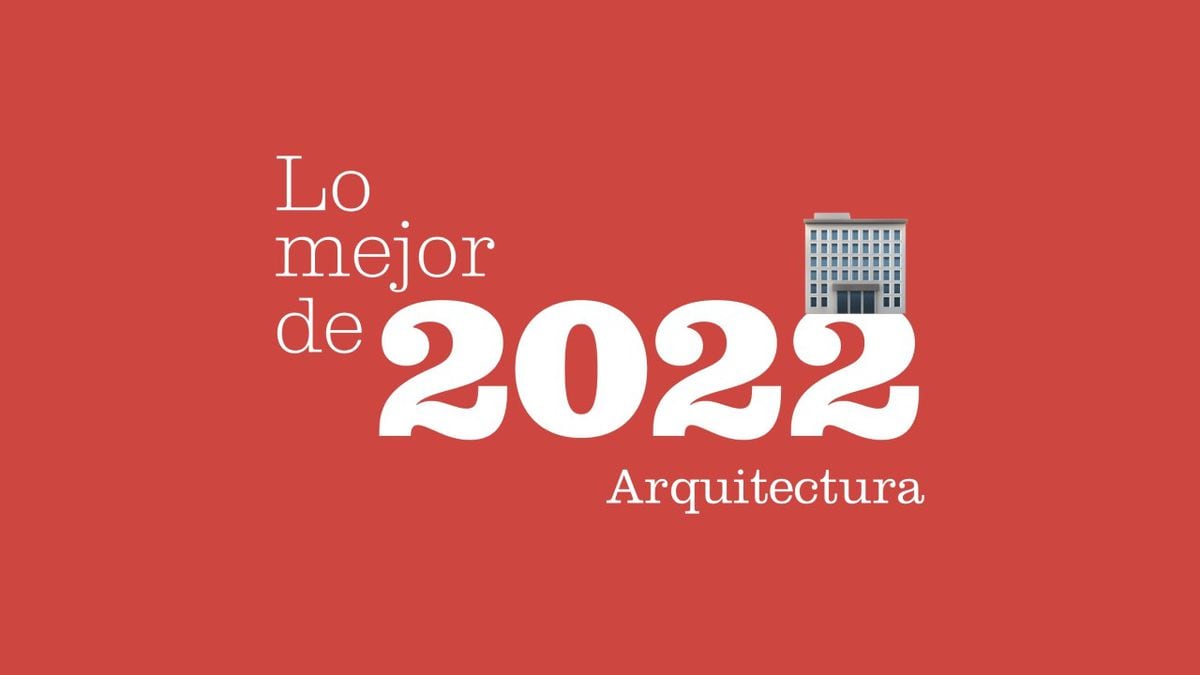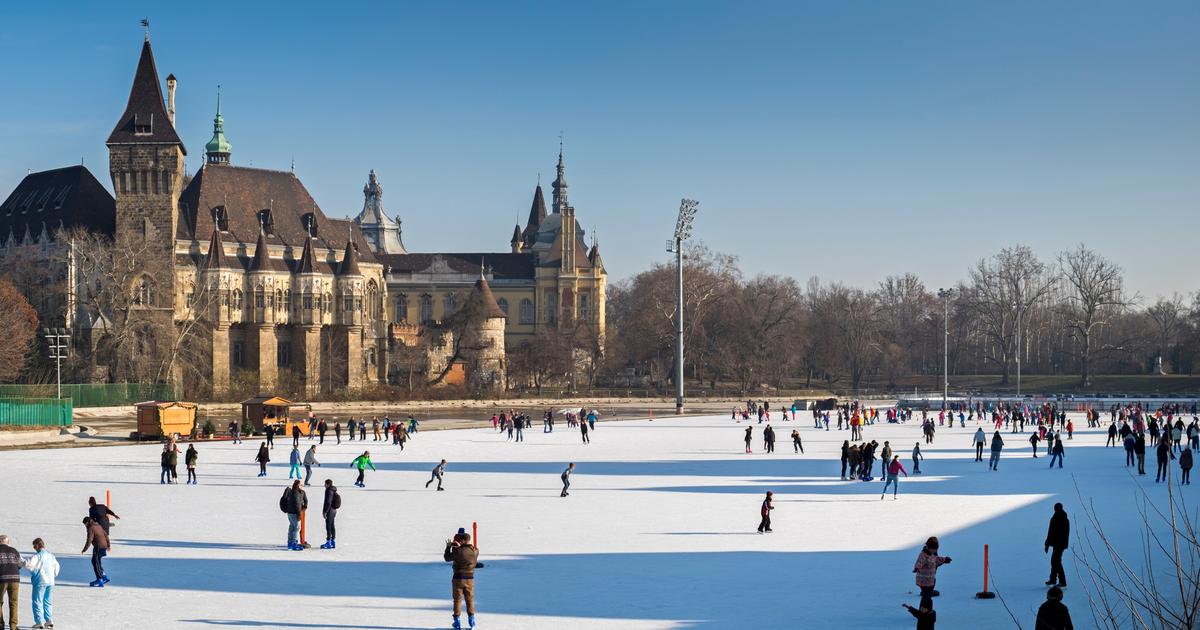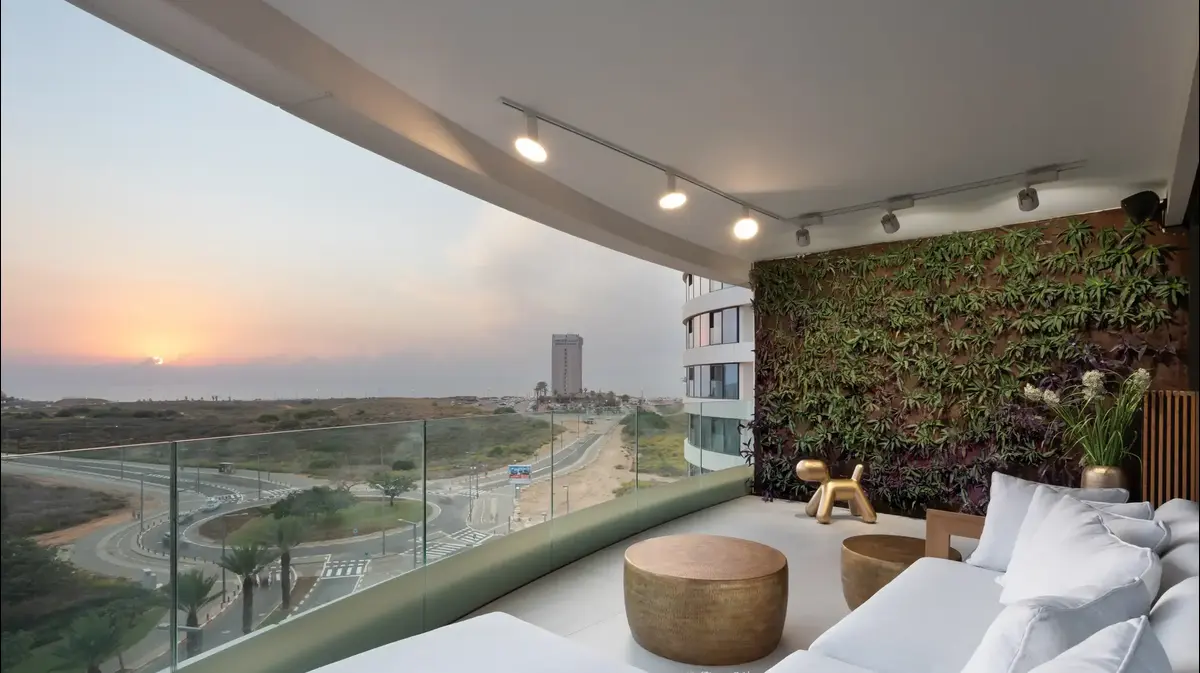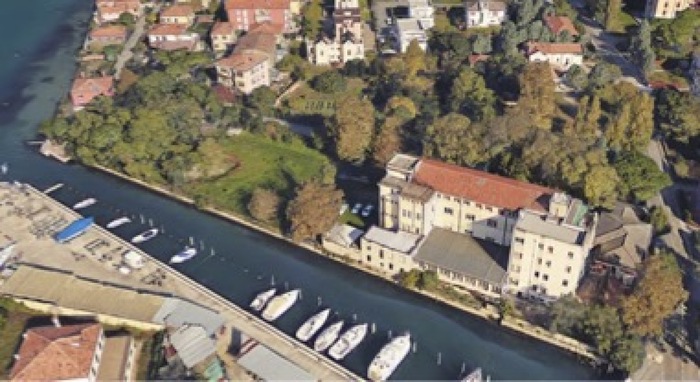From building to rebuilding.
That is the summary of the architectural year.
In its best version, the architecture of 2022 has delved into the demands that already define the most relevant urban planning and design of the 21st century.
Renaturation, the plant rescue of buildings and cities, is the best of the year.
It is not just about decorating cities, but about undoing the false dichotomy that opposed nature and city.
To understand that, even if we live in a metropolis, we are part of nature.
And that, above technologies that tell us how long the bus is going to take or where there is an empty parking lot, perhaps we need the shade of the trees and the oxygen they produce.
In Utrecht, the transformation of a motorway into a canal is part of that practice.
Reclaiming land from the sea and erecting an artificial island (Little Island, by Heatherwick Studio, in New York), surely not.
The solutions that are required are sometimes small —replacing the traditional Barcelona bananas with tipuanas that require less water—, and others, like the one in Utrecht, are profound.
Trees losing leaves in winter to let the sun in and reborn in spring to mitigate it should not be a nuisance.
It's a blessing.
And, as with the presence of children and the elderly, the reappearance of gardeners in cities is a sign of civility.
Restoration of the Procuratie Vecchie, in Venice, by David Chipperfield.
TIZIANA FABI (AFP via Getty Images)
For this reason, the architectural and urban planning keys of the year do not live in watertight compartments, they are contagious and needed.
They are transversal.
Thus, this renaturation is part of the sustainability that now flourishes not only as an urgent requirement and sine que non, but also, and fortunately, as an increasingly assimilated and widespread practice.
What makes it possible?
Industrial development, a key detail for sustainable construction to be viable.
Added to passive buildings are active ones —capable of storing more energy than they need— and the generalization of constructive solutions —better insulation, carpentry with thermal bridges, gray and rainwater recovery, accessible solar panels— and decisions design, such as recycling materials or low-maintenance construction,
handmade and old fashioned.
It is that constructive sustainability goes from being the exception to becoming the rule.
To the keys that are defining the construction of the planet are added, necessarily, those of its reconstruction and, many times, those of its correction.
Correcting is reducing energy consumption or planting trees that can be maintained.
To correct is to recover, plan and search for public spaces for coexistence.
The WHO admits that proximity to a park, forest or shady square not only reduces CO2, but also reduces the risk of mental and physical illnesses in citizens.
Health, above mobility, is beginning to draw the best of cities.
The access to the discipline of people of diverse cultures and social classes has brought architecture to a new place.
But surely it is the access to the profession of architect of people coming from very different cultures and social classes what has taken architecture to where neither the professionals nor the market nor politics cared before taking it.
It is not just about building in Africa according to the
genius loci
and the climate of the place, instead of imposing the western model that has globalized (and drowned) the world.
It is also about building for everyone in Paris and Barcelona.
It is about being able to continue living in the cities where we grew up or decided to stay.
What gives hope in this world of wild markets, planned obsolescence and rampant gentrification is that urban trends are increasingly transversal and that they are abandoning the reductionist dichotomy of opposing the industrial to the artisan or the technological to the natural.
Thus, what is sustainable can renaturalize, and political initiative, in the hands of professionals or citizen associations, can give new life to old buildings, define with housing cooperatives other ways of inhabiting or protecting natural spaces.
Within this framework and with this background, both radical urban interventions that transform highways into canals and buildings that disappear into the background (SANAA in its Sydney Modern Project) stand out to join what came before them.
David Chipperfield has done it in Venice, bringing new life to the Procuratie Vecchie in Saint Mark's Square.
Finally, the buildings to the right of the basilica are already, in addition to a framework for the square, an accessible space for offices.
The challenge of accepting that a city is a place in perpetual transformation without the need to destroy or mummify history has been taken up by the two aforementioned studies.
But also those who stack factory spaces or sow a vegetable skin on their facades so that architecture and those of us who inhabit it can continue to breathe.
The five best projects of the year
View of the recovered section of the Catharijnesingel canal in Utrecht.
OKRA landschaps architecten
Catharijnesingel, in Utrecht (Netherlands)
OKRA
A public space is won, planned or recovered.
This has been the case of the Catharijnesingel canal in Utrecht, by the OKRA studio, winner of the European Prize for Urban Public Space for transforming a motorway into a reorganized canal as a place for public leisure and as a means of transport.
This 1.1 kilometer urban park adds 40,000 m3 to the canal and rebuilds an ecosystem.
Jakob Factory in Ho Chi Minh City (Vietnam).Ori Hiroyuki;
Severin Jakob
Jakob Factory, in Ho Chi Minh City (Vietnam)
G8A Architects and Rollimarchini Architekten
Far from following the manufacturing models that spread throughout the territory, the headquarters of the stainless steel cable producer Jakob is a building wrapped in a permeable and flexible mesh that uses vegetation as a second skin that adapts to the tropical climate of the place. feeding on the rain and filtering the sun.
The project illustrates the renaturation of architecture, almost the opposite of the green makeup typical of vertical gardens, with a very high cost in maintenance and water consumption.
The first Community Life Center, located in the Trinitat Vella neighborhood of Barcelona.jose hevia
Community Life Center, in Barcelona
Do Architecture
This project concentrates the associations of the neighborhood in a building raised dry with a system of panels and ceilings of cross-laminated wood that makes the construction material also the finish.
The ventilation system takes advantage of the inertia of the terrain and is hidden in it.
With clean air tubes buried under the slope, the air arrives warm in winter and cool in summer.
Extension facade with landscaping interventions from Sanaa in Sydney.
NGNSW
Sydney Modern Project
SANAA
The extension of the National Museum of Art in the Australian city does not compete with the icons of the city, but rather stands at their feet.
It becomes a white and evanescent plinth to let in the light, the vegetation and the citizens.
La Borda housing cooperative, in Barcelona.
IMHAB
La Borda Cooperative, in Barcelona
lacol
The Barcelona studio, more interested in being groundbreaking socially than aesthetically, has won the Mies van der Rohe Emerging European Award by creating another way of living with this self-managed and non-speculative housing cooperative in the Barcelona neighborhood of Can Batlló.
And thus opens a path of hope that leads reality to the best of the architectural dream.
You can follow BABELIA on
and
, or sign up here to receive
our weekly newsletter
.
Subscribe to continue reading
Read without limits
Keep reading
I'm already a subscriber













